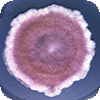Notice
Welcome to PhytoPath
PhytoPath was a bioinformatics resource that integrated genome-scale data from important plant pathogen species with literature-curated information about the phenotypes of host infection. Using the Ensembl Genomes browser, it provided access to complete genome assembly and gene models of priority crop and model-fungal, oomycete and bacterial phytopathogens. PhytoPath also linked genes to disease progression using data from the curated PHI-base resource.
Recently added
Fusarium poae is a relatively weak pathogen with increasing importance in wheat, because it produce several mycotoxins.
Explore this genome on Ensembl Genomes.
Fusarium culmorum is a fungal plant pathogen and the causal agent of seedling blight, foot rot, ear blight, stalk rot, common root rot and other diseases of cereals, grasses, and a wide variety of monocots and dicots. In coastal dunegrass (Leymus mollis), F. culmorum is a nonpathogenic symbiont conferring both salt and drought tolerance to the plant.
Text from Wikipedia.
Explore this genomes on Ensembl Genomes.
Visualise your data
The PhytoPath project utilises the Ensembl genome browser to provide access to genomes which allows the visualisation of user custom tracks. Data in BED, GFF/GTF among other formats is supported by the Ensembl Genomes framework. You can learn how to add custom tracks in the help section of Ensembl.
This release
The current release of PhytoPath is built from the 35th release of Ensembl Genomes and version 4.2 of PHI-base and was released on May 2017. For all species, available data includes genome sequence and gene models, functional annotation, and protein-based comparative analysis with other fungal/oomycete species (provided by Ensembl Genomes), together with expertly curated molecular and biological information on genes proven to affect the outcome of pathogen-host interactions (provided by PHI-base). In addition, the following specific data sets are also available:
- RNA-Seq alignments for Puccinia triticina, Colletrotrichum graminicola, Verticillium dahliae JR2, Zymoseptoria tritici, Phytophthora sojae, Albugo laibachi and Pythium ultimum.
- Variation data forPhytophthora infestans, Verticillium dahliae JR2, Zymoseptoria tritici, Fusarium graminearum, Puccinia graminis Ug99, Puccinia graminis CRL 75-36-700-3 and Fusarium oxysporum.
- DNA alignments in the Protists, Pucciniales, Glomerellales, Sacharomycetales and Hypocreales clades.
The last Ensembl Genomes release contains 275 genomic sequences (from 113 fungi, 25 protists and 137 bacteria).
PhytoPath needs you!
Are there important fungal or oomycetes plant pathogen genomes or data sets that you would like to see in PhytoPath? Please let us know, and we will try to prioritise these data.


